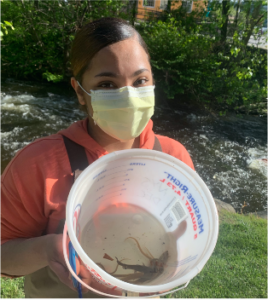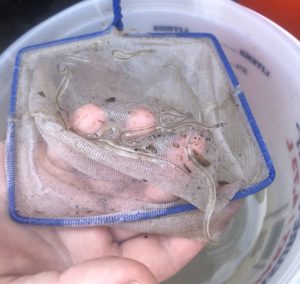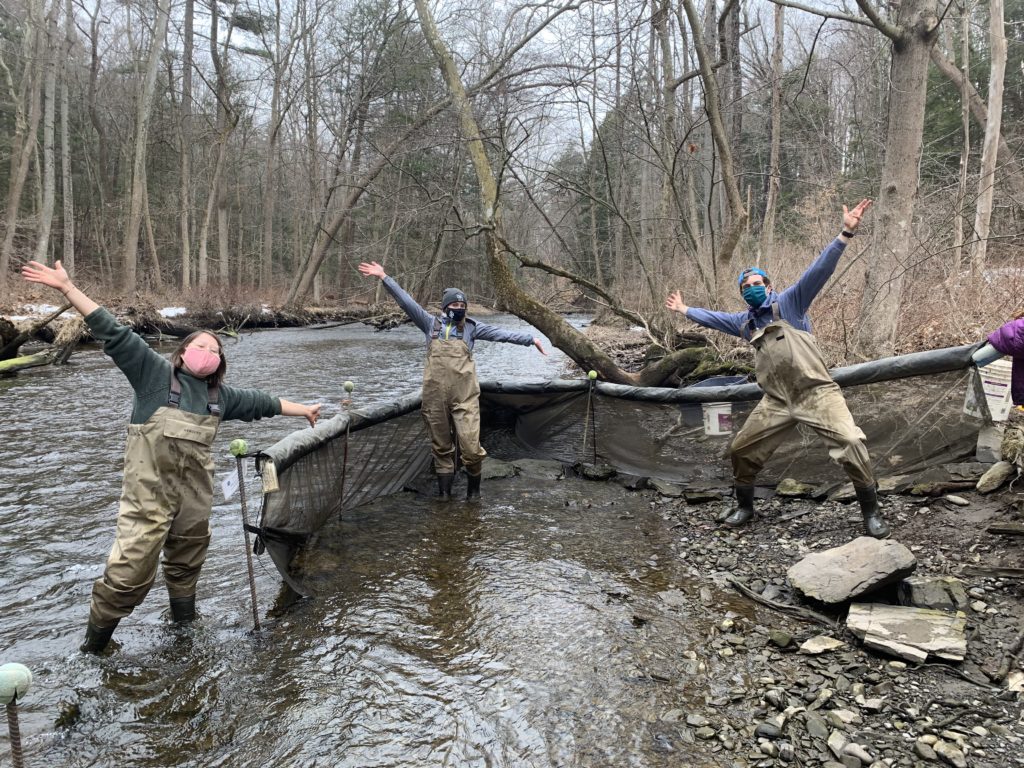 Donning tan waders and face masks, volunteers and students from 13 schools ventured into the Hudson River and its tributaries this spring to collect and count tiny American eels. This migratory fish hatches in the Sargasso Sea in the Atlantic Ocean and enters coastal estuaries, including the Hudson River, as see-through “glass eels” each spring. With the guidance of New York State Department of Environmental Conservation (NYSDEC) staff, Hudson River Eel Project participants checked specialized nets and traps at 12 locations during the 2021 migration season to monitor the health of the population.
Donning tan waders and face masks, volunteers and students from 13 schools ventured into the Hudson River and its tributaries this spring to collect and count tiny American eels. This migratory fish hatches in the Sargasso Sea in the Atlantic Ocean and enters coastal estuaries, including the Hudson River, as see-through “glass eels” each spring. With the guidance of New York State Department of Environmental Conservation (NYSDEC) staff, Hudson River Eel Project participants checked specialized nets and traps at 12 locations during the 2021 migration season to monitor the health of the population.
“This project is a powerful example of community science that engages students, teachers, and community volunteers in the Hudson River estuary,” said Sarah Mount, NEIWPCC environmental analyst and Hudson River National Estuarine Research Reserve science educator. “It helps them learn about their local ecosystem in a hands-on way while collecting important information about migrating fish and environmental conditions.”
The 14th season of the Hudson River Eel Project wrapped up with a total of 77,350 glass eels caught, counted, and released upstream. NYSDEC staff and scientists and program participants celebrated with outdoor “Eelebrations” to discuss final data, thank volunteers, and share stories and experiences. One participant, Nadia Morales, a student from Poughkeepsie High School said, “It’s very therapeutic. People get caught up with life, but then you go into the river, and counting eels is very calming.”
The Hudson River Eel Project is coordinated by the NYSDEC Hudson River Estuary Program and the Hudson River National Estuarine Research Reserve, in partnership with NEIWPCC and the Water Resources Institute at Cornell University.
To participate in future eel sampling, send an email to NYSDEC including where you live or would like to sample, and why you’re interested in participating.
Watch the Hudson River Eel Project video here.

